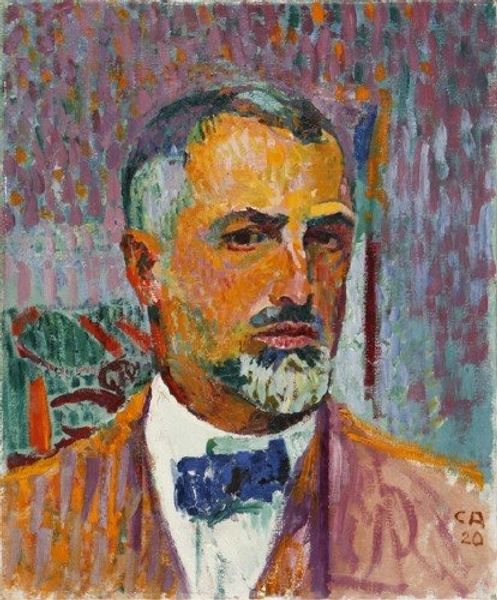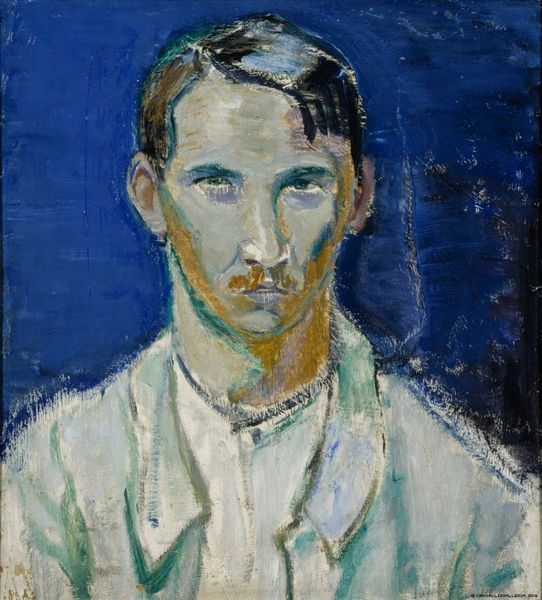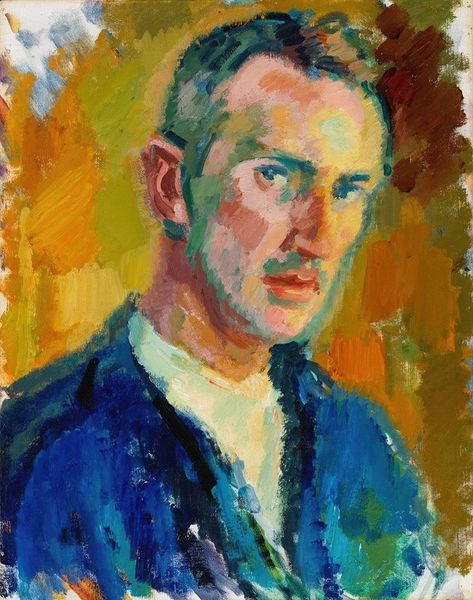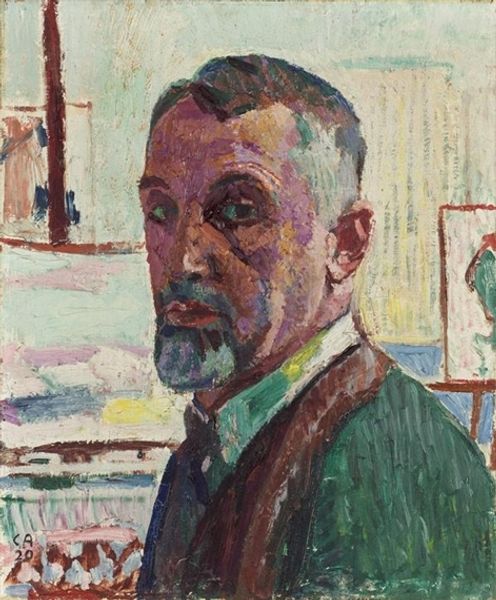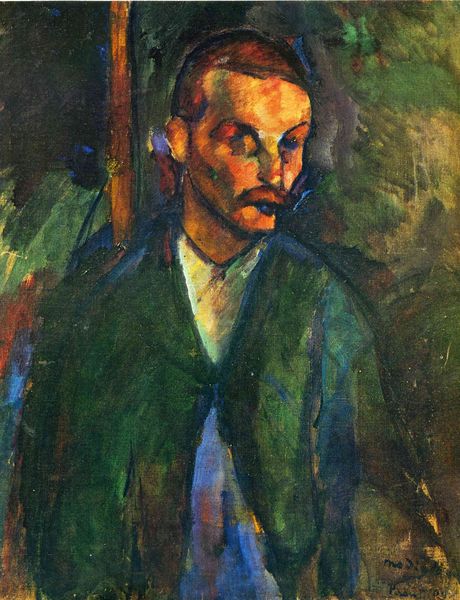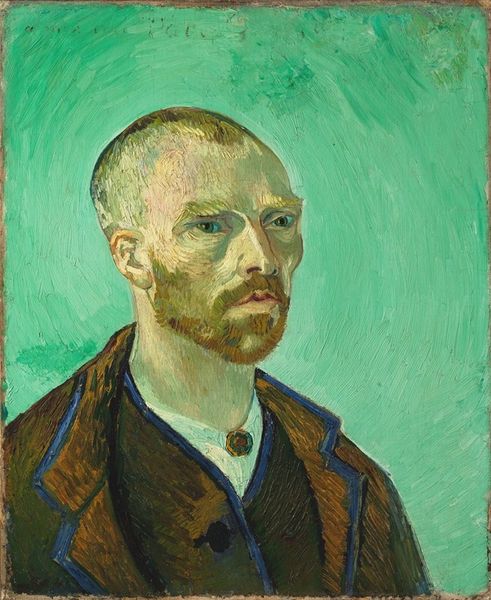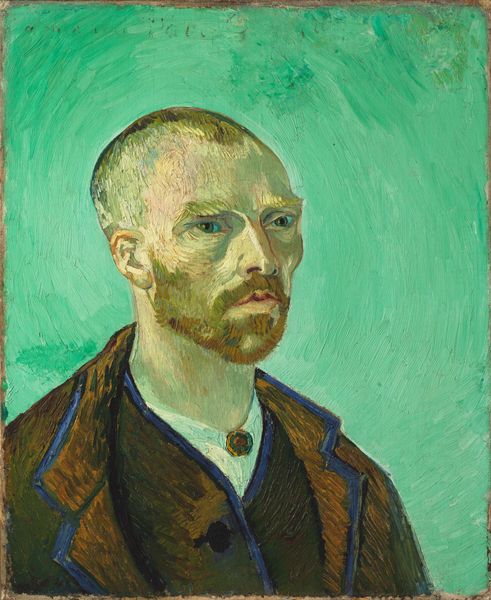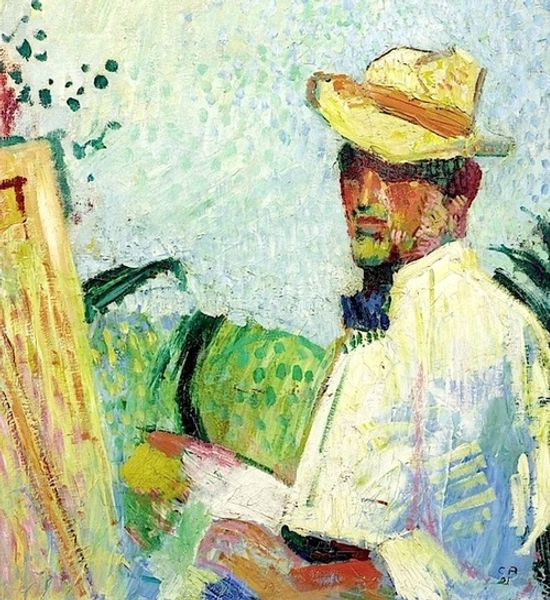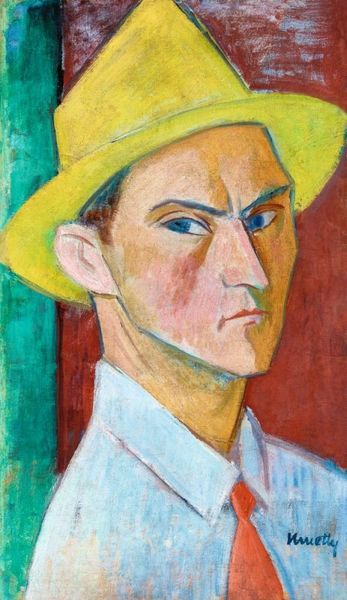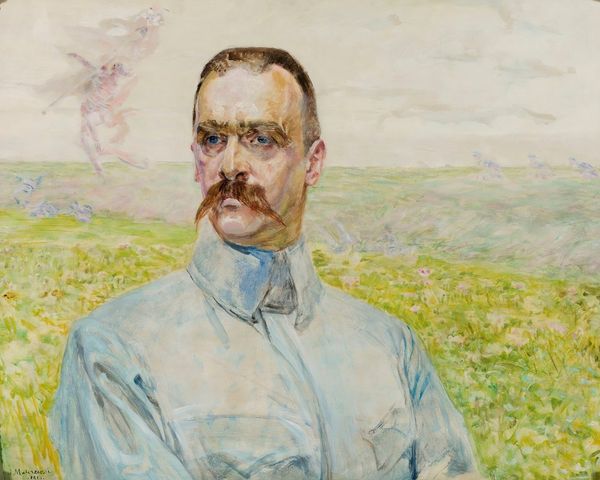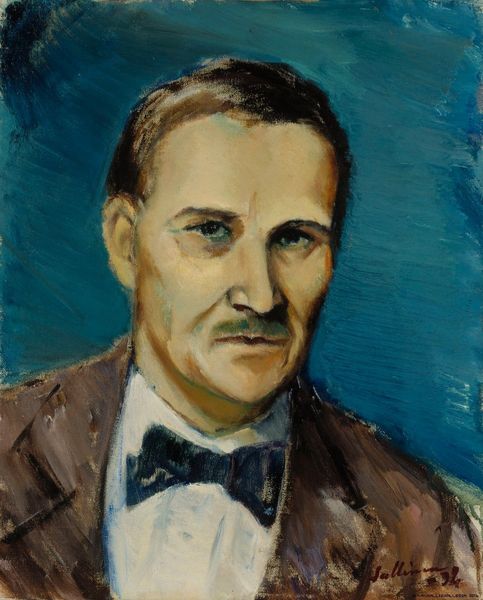
Copyright: Public domain US
Curator: First impressions: those vibrant dabs of color! It’s almost Fauvist. But there's also a somberness about the subject’s gaze that grounds the work. What do you think? Editor: Immediately, I see Cuno Amiet wrestling with his inner self. He renders himself almost unnaturally illuminated against the backdrop of his garden—sun-drenched but internally shadowed, like a stage lighting trick to reveal a truth best kept obscured. Curator: Exactly. This is Amiet’s “Self-Portrait in the Garden,” created in 1921. Here we see a portrait painted en plein air. Amiet was a member of the Brucke, but unlike his cohort, this doesn’t convey angst and raw emotion. There's a calculated tranquility at play, an effort to project harmony. Editor: Oh, he tries! But those frantic brushstrokes, like hurried thoughts – the clashing hues in his skin tones— betray him. To me, the tension reveals an artist actively confronting his place in a world shattered by war, desperately seeking equilibrium but admitting failure via frenetic mark-making. Curator: Perhaps, although I think the tension resides more subtly, perhaps as a performative role given the traditional concept of self-portraiture, with the added backdrop of social anxieties during the period. The art world faced radical change after the first world war; it was no longer enough to be "merely" beautiful or well-composed, you now needed to engage with broader political currents. It appears as though Amiet attempts that here. Editor: Absolutely. It's an admission in paint, I reckon. Each stippled color is a brushstroke of bravery – confronting the garden and the soul—in all its discordant, imperfect beauty. An intimate invitation from an artist struggling in real time. Curator: A thoughtful read, capturing Amiet's artistic grappling within a turbulent era. Thanks for those fresh perspectives! Editor: Likewise! An artist's truth—as glimpsed within a garden's mirror.
Comments
No comments
Be the first to comment and join the conversation on the ultimate creative platform.
